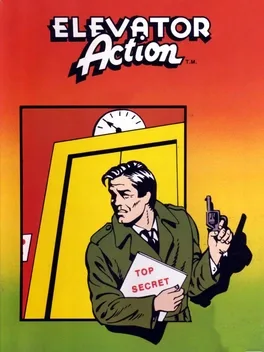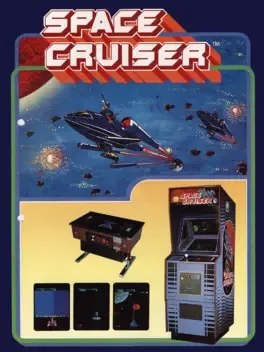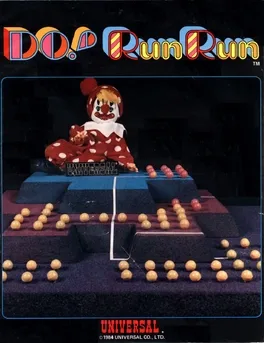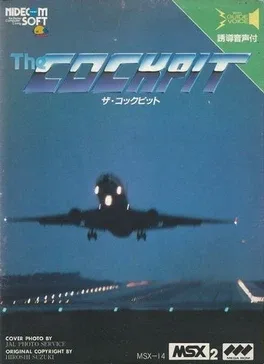Popular games published by company Nidecom Soft

Elevator Action is a 1983 arcade game by Taito. It debuted during the "Golden Age of Arcade Games". Innovative in gameplay, the game was very popular for many years. In the game, the player assumes the role of a spy who infiltrates a building filled with elevators. He must collect secret documents from the building and traverse the 30 floors of the building using an increasingly complex series of elevators. The player is pursued by enemy agents who appear from behind closed doors. These agents must be dealt with via force or evasion. Successful completion of a level involves collecting all the secret documents and traversing the building from top to bottom. In the lower floors of the building, the elevator systems are so complex that some puzzle-solving skills are needed. The game was available as a standard upright cabinet The controls consist of a 4-way joystick and two buttons, one for "shoot" and the other for jumping and kicking. The maximum number of players is two, alternating turns. The graphics are extremely simple, 2D color graphics and in-game music was composed by musician Yoshio Imamura. The game was followed by a sequel, Elevator Action II (also known as Elevator Action Returns).

Front Line is a vertically scrolling action game. Your mission is to infiltrate enemy territory and destroy their fortress. To reach the fortress, you will have to make your way through varied and dangerous terrain. Jungles, deserts, brush, and rocks all slow your progress, plus each area has numerous enemy fighters and tanks trying to stop you. To help get past these obstacles, you are armed with a machine gun and grenades; at some points in the game you may even come across an abandoned tank which you can control to increase your odds of survival. When you reach the end of the level and successfully destroy the fortress, the game will repeat at a higher level of difficulty. Gameplay is for one or two players, and four different skill levels are available.

The Legend of Kage is a 1985 arcade game by Taito and was released for several contemporary video game home systems in 1986. The player is armed with a kodachi shortsword and an unlimited amount of shuriken. Grabbing a crystal ball causes the player character's Kage's clothes to change to the next level in colour and thereby attain certain powers (bigger shuriken and/or faster speed); if Kage is hit while in green or orange clothes, he does not die but revert to his normal red clothes. Grabbing a scroll causes Kage to stand still and meditate for several seconds while approaching enemies drop to the ground dead (although the scrolls appear in the arcade version, the crystal balls do not). This MSX version was brought without a license to the SG-1000 in Taiwan.

A vertical scrolling space shooter.

Do! Run Run known as Super Pierrot in Japan, is the fourth and final incarnation of Mr. Do!, the Universal video game mascot. Returning to his Mr. Do! roots, the clown has a bouncing powerball with which to hurl at monsters. What makes this game novel is that instead of burrowing through the ground to get at cherries, Mr. Do runs along the playfield picking up dots, and leaving a line behind him, which the player is encouraged to create closed off sections with, which turn any dots left behind into cherries. Gone are the giant apples to crush foes, but the multi-tier stage design has two precariously balanced log traps, which can be rolled downslope if either pushed from above or closely approached from the propped up stick side. The resulting game is somewhat of a cross between Mr. Do!, Congo Bongo, Pac-Man, and Qix. The title is a reference to the song Da Doo Ron Ron.

The Cockpit is a Simulation game, developed and published by Taito Corporation, which was released in Japan in 1988. Though the game is limited to simulating runway landings only. After a successful touchdown you can progress to other airports around the country, each with increasing difficulty in the way of wind interference. The graphics and controls are quite basic, but the game still aims to provide immersion during each short landing sequence. The later versions on X68000 and PC-98 feature control tower speech and higher resolutions which add further realism to the simulation.